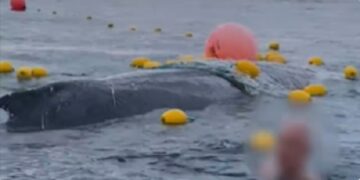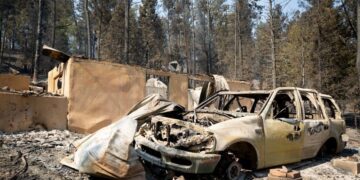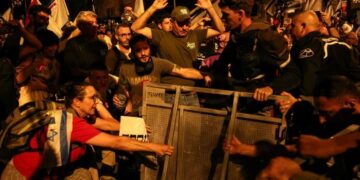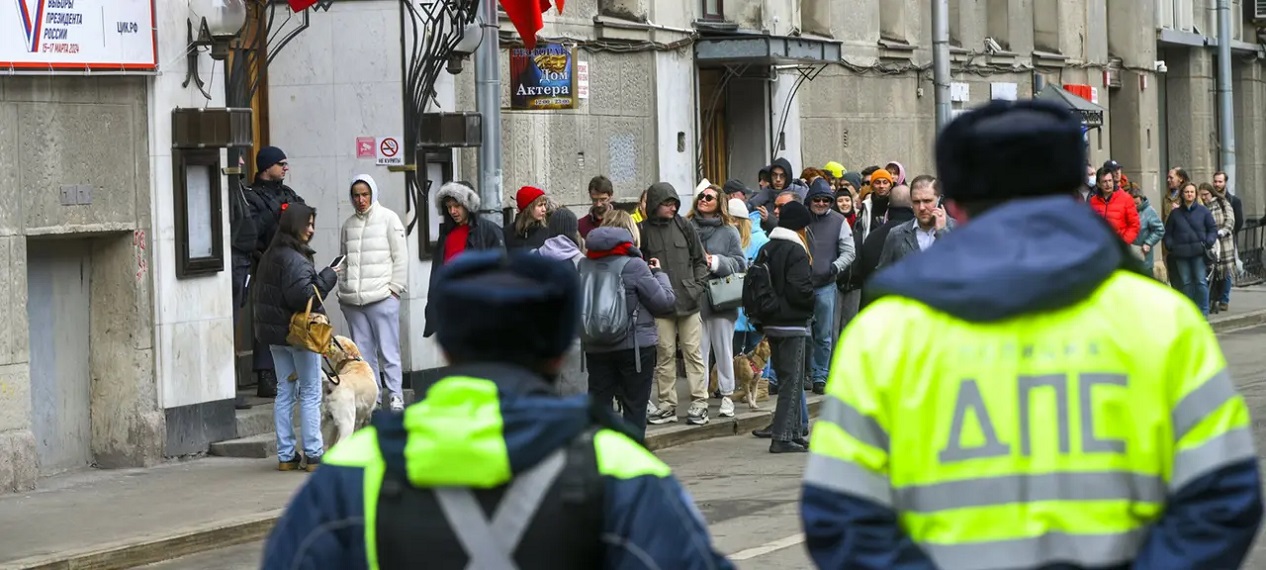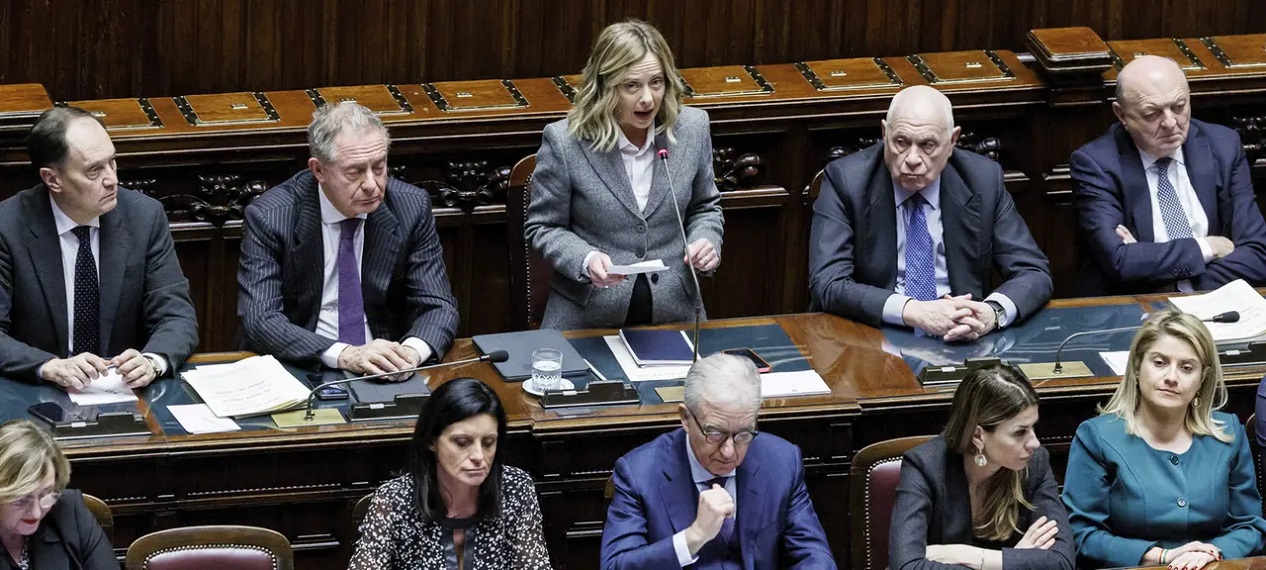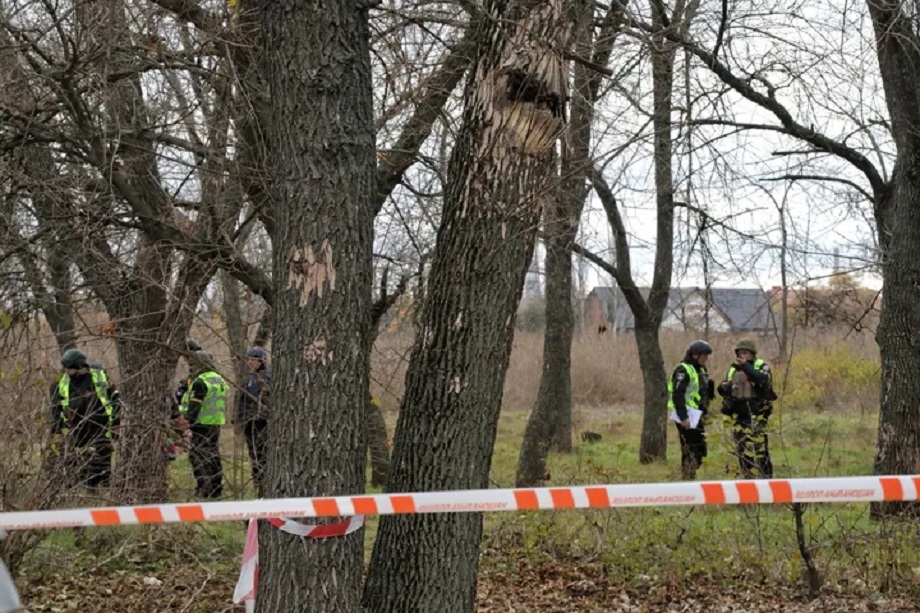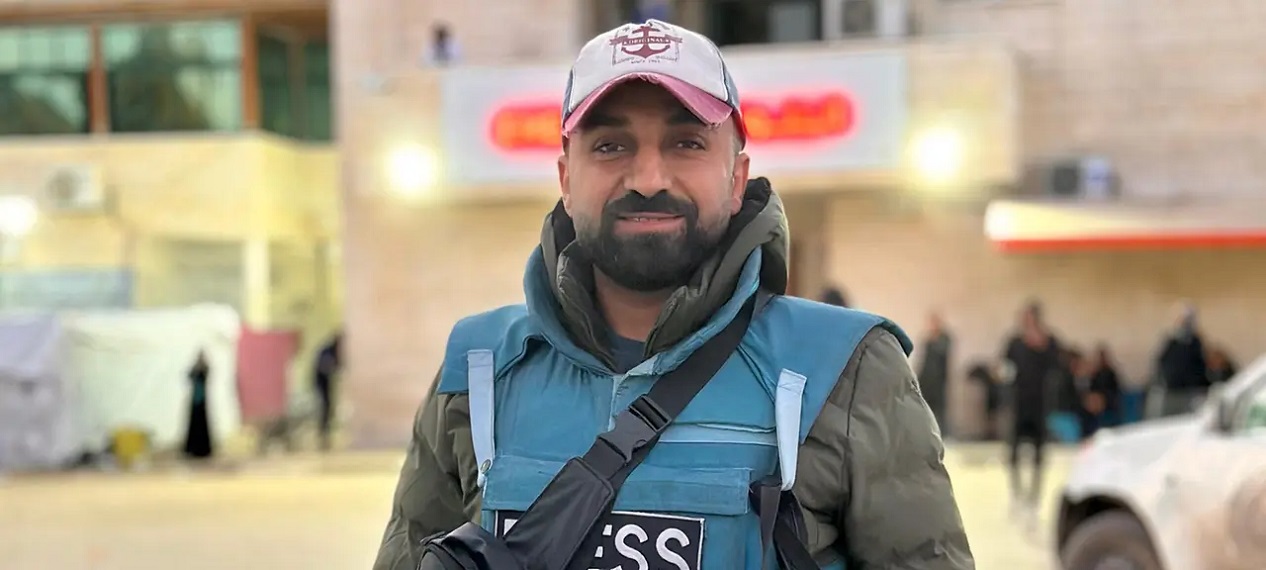Since the liberation of this large city in the south of the country, testimonies have multiplied, after eight months of occupation by Russian forces.
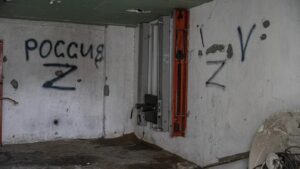 A police station in which Russian soldiers allegedly tortured Ukrainian prisoners, according to testimonies from residents of Kherson collected after the departure of the occupying army, on November 16, 2022. (ANADOLU AGENCY / AFP)
A police station in which Russian soldiers allegedly tortured Ukrainian prisoners, according to testimonies from residents of Kherson collected after the departure of the occupying army, on November 16, 2022. (ANADOLU AGENCY / AFP)
“I have yet to see ‘torture’ on such a scale”. Dmytro Loubynets, in charge of human rights in the Ukrainian Parliament, described, Thursday, November 18 on national television, the abuses observed in Kherson after the departure of the Russian forces. “The scale of the phenomenon is horrific,” said the Ukrainian official, who said he had “visited all the torture rooms in various regions of Ukraine”.
Since the liberation of Kherson by the Ukrainian army, testimonies have multiplied. Here is what is known so far about these accusations against the Russian army, which occupied this major city in the south of the country for eight months.
Torture rooms
“Dozens of people” were “electrocuted, beaten with metal pipes. Their bones were broken” and “the Russians filmed all this”, accused Dmytro Loubynets. A resident of Kherson told AFP that he had been detained for weeks. He says he was tied up, beaten and electrocuted by Russian and pro-Russian officials while in custody. Oleksander testified to CNN: “They abused everyone, starved us, made us work for free to fix their military vehicles… They beat us as much as they wanted.”
He says in particular that Russian police officers “voluntarily broke his leg” during his arrest. In the prison where he was detained and where he led the journalists of the American channel, the torture room was set on fire by the Russians, “to destroy the traces of their crimes”, he claims. CNN describes cells, fences covered with barbed wire and a long, dark hallway, “where Russians executed Ukrainians for singing pro-Ukrainian songs or wearing tattoos,” said another ex-prisoner.
AFP for its part published photos showing “a detention room awaiting trial, where the Russian occupier has set up a torture room.”
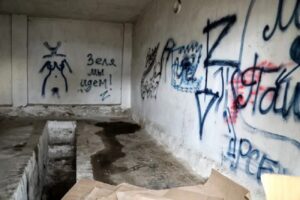 A room described as a torture chamber in Kherson, southern Ukraine, on November 16, 2022. (NURPHOTO /AFP)
A room described as a torture chamber in Kherson, southern Ukraine, on November 16, 2022. (NURPHOTO /AFP)
Witnesses report another location to Reuters: a two-storey police station, called “the hole” and located at number 3 Energy Workers Street. “Two residents of a building overlooking the courtyard of the police station said they saw bodies wrapped in white sheets being taken out of the building, placed in a garage, then thrown into trucks to be taken away”, continues the agency of press, which states that it was not able to verify these statements.
Interrogations to obtain confessions
What were the Ukrainians brought to these prisons charged with? Oleksander, still quoted by CNN, says Russian police present in Kherson during the occupation accused him of being a criminal. Another Ukrainian, Kosta, explains that he was accused of belonging to a network of saboteurs attacking Russian officials and installations, continues CNN.
The latter confides that he suffered psychological torture, aimed at obtaining confessions. He tells the channel that he experienced a fake execution by firearm and testifies to cries heard from other cells. “They put electric cables on my testicles, but didn’t turn on the power,” he said. He was eventually released.
War crimes and “systematic” torture
Visiting the city on Tuesday, Ukraine’s president said authorities had gathered evidence of at least 400 war crimes committed by Russian troops during the region’s occupation, calling the military “savagery” of the opposing camp, “similar to what they did in other regions”, reviving the memory of the mass graves discovered in April in the town of Boutcha, not far from kyiv. Some corpses bore signs of torture. Residents had also reported being victims or witnesses of these acts perpetrated by the Russian soldiers. At the time, Moscow denied targeting civilians and committing atrocities.
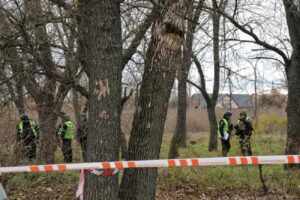 Ukrainian investigators inspect a park in Kherson where the Russian army shot 17 Ukrainian territorial defense personnel after the city was liberated, authorities said (picture taken on November 16, 2022). (NURPHOTO / AFP)
Ukrainian investigators inspect a park in Kherson where the Russian army shot 17 Ukrainian territorial defense personnel after the city was liberated, authorities said (picture taken on November 16, 2022). (NURPHOTO / AFP)
“I’m sure that in every major locality, we will discover a torture chamber. Because it is a system put in place by Russia,” said Dmytro Lubynets again during his televised address.
On Tuesday, the UN warned of numerous cases of tortured prisoners of war on both sides. “The vast majority [of prisoners of war captured by Russian forces] whom we interviewed told us they had been tortured and ill-treated,” said Matilda Bogner, head of Ukraine’s human rights monitoring mission. The UN has also received “credible allegations” of summary executions of Russian POWs captured by Ukrainian forces and several cases of torture and ill-treatment. She added, however, that these violations of the Geneva Convention relative to the treatment of prisoners of war, ratified by the two countries, were “rather systematic” on the Russian side and not on the Ukrainian side.
The UN will investigate, France offers its help
While Ukrainian investigators are on the spot, the UN announced on Tuesday the dispatch of observers to the Kherson region, in order to seek additional evidence of ill-treatment targeting civilians.
French investigators are also at Ukraine’s disposal to investigate possible war crimes in Kherson. “We are supporting the Ukrainian General Prosecutor’s Office and we have teams that are on site in Ukraine at this stage to help the investigators if the Ukrainian authorities ask us to do so” Claire Legendre, spokesperson for the Ministry of Foreign Affairs. French investigators who had been dispatched to the scene when war crimes were discovered in Boutcha “are not yet in Kherson”, she said.



